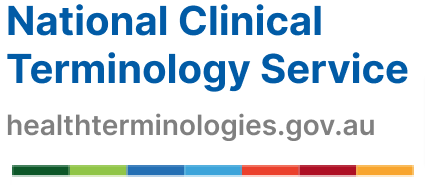AMT FAQs
For further information on the Australian Medicines Terminology, please see The AMT: focusing on medicines.
How often are the AMT updates released?
AMT is updated every month as part of the SNOMED CT-AU release. It includes changes to the Pharmaceutical Benefits Scheme (PBS), registered products from the Australian Register of Therapeutic Goods (ARTG) and additional content requested by users.
Can I propose any changes or additions to the AMT?
Yes! We invite you to submit requests to the NCTS. Our team can add new content including synonyms, and change or remove content if it is incorrect. Please visit our Request content page for more information.
How can the AMT be used?
The AMT is our national medicines extension of SNOMED CT. It is used by clinical software applications to support electronic medication management activities. These include:
- prescribing
- dispensing
- administration
- recording of information
The AMT also enables the exchange of medicines information with other systems (including the My Health Record system). This ensures continuity of care for patients across different times, settings, and providers.
How do I map terms from existing systems that use different coding schemes?
There are many issues to consider when mapping existing codes to the AMT. The outcome should be a reproducible map for the purpose intended. So it is vital to understand how the data will be used before starting any mapping activity. This will ensure consistency in the mapping process. Please see the Mapping considerations page for further guidance.
Which AMT concepts does the Pharmaceutical Benefits Schedule (PBS) monthly data release contain?
The AMT identifier and Preferred Term description are included for the Medicinal Product (MP), the Medicinal Product Pack (MPP) and the Trade Product Pack (TPP) for PBS items; and the Medicinal Product Unit of Use (MPUU) and Trade Product Unit of Use (TPUU) for chemotherapy items.
Further information is available from the developer’s section of the PBS website.
Does the AMT monthly release contain all the PBS items including new items?
The AMT monthly releases should contain all PBS items. These items include medicines, chemotherapy items, bandages, dressings, nutritional supplements and diagnostic agents. However, there are differences between our release timetables. As a result, items may be listed in the PBS Schedule before their release as part of the AMT.
Do all AMT codes in the PBS data exactly match codes contained in the SNOMED CT-AU releases?
The PBS includes AMT concepts wherever possible. However, the Department of Health may use their own identifiers where a PBS listing occurs before the release of AMT concepts, or use their own non-AMT term where the AMT concept does not meet PBS requirements. This may occur where the PBS description requires more or less detail than the associated AMT concept. For example, PBS data differentiates salts of metoprolol whereas the AMT Medicinal Product concept does not.
How can non-AMT identifiers be identified in the PBS data file?
Non-AMT identifiers can be identified in the PBS data by the SNOMED CT namespace identifier. This seven digit code issued by SNOMED International ensures that concept identifiers issued by different organisations are unique.
AMT concepts created by the NCTS use the namespace identifiers 1000036 or 1000168, as seen in the identifier: 21664011000036103.
Pharmaceutical Benefits Division (PBD) created concepts use the namespace identifier 1000144, as seen in the identifier: 57291000144108.
Will the non-AMT codes provided in the PBS data release be updated to AMT codes?
Interim PBS non-AMT identifiers will be replaced by AMT identifiers when available. When this change occurs (for example to replace a non-AMT identifier with an AMT identifier), the PBS XML will include a change element to provide notification of that change. However, there will always be instances where a non-AMT identifier remains. Refer to ‘Do all AMT codes in the PBS data exactly match codes contained in the SNOMED CT-AU releases?’ in this section.
How does the PBS Code align to an AMT code?
Each PBS Code in combination with the Manufacturer Code identifies a specific brand of medicinal product at the pack size level. This is mapped to the appropriate AMT Trade Product Pack (TPP) concept. You can request help using the online Support Request form.
Is it necessary to implement the AMT model to determine all the relationships that exist between PBS medicines?
Ideally, use of AMT information from PBS data should be linked to a full implementation of the AMT model and associated data. This ensures that the AMT information from the PBS data can be viewed in the correct context. It may also allow PBS details to be imported into a clinical application more easily. You can request help using the online Support Request form.
Where can I get more information on the AMT in the PBS?
Information on The Schedule of Pharmaceutical Benefits is available from the PBS website. You can use the online browser or download the publications. Further information about the files and schema is available from the developer’s section of the PBS website.
